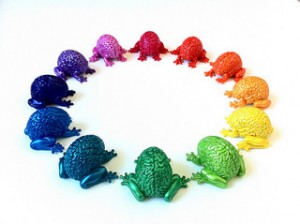Coming back into the fold
I wanted some ideas this week about effective, valuable ways to use ipads in K-2 classes, because I am part of the team working on how we will be making good use of these devices when they arrive in classes later this year. For me it always boils down to the practicalities of how something will work in the classroom – I read a lot of philosophical and erudite discussion of enhancing pedagogy and moving through the stages of the SAMR model of technology adoption and integration etc, etc, etc, but when it comes down to helping teachers on the ground, I want to hear what is working for other people in similar situations.
Enter the PLN. I hopped on Twitter on Tuesday night (I am only a sporadic, purpose-driven user) and put the question out there, pinged a few people with direct tweets, and then spent the next little while marvelling at the wonderful suggestions I received.
40 mins= 5 new apps, several articles, following 3 new people & 3 new blogs; how’s that for awesome PD? thanks PLN!
— katemreid (@katemreid) March 30, 2015
Since then I’ve added 3 more apps, 2 more people, 2 more blogs, and several articles – oh and a very kind email list of schools to check out!
This is proving to me yet again that social media can connect us to people with the knowledge we need, if you build those networks purposefully. I found that my Twitter network grows most rapidly, and more richly, when I actively seek out people who tweet insights during conference streams. I want to connect with people who have lively, curious minds, who seek out new ideas and information and are so thrilled with what they find that they just want to share their excitement! I want to read about brave new projects, and about what goes wrong, and how they tried to fix it. Fortunately for me, I have just enough people in my PLN now that I can ask a few questions and get some helpful answers back in a reasonable timeframe, and with far less effort than trawling through endless search results in the-major-search-engine-of-your-choice. I guess it comes back to that sense of knowledge being curated information; a search engine can return data, but for a query about how to use ipads effectively in an early childhood setting, the personal responses from experienced educators are exponentially more valuable.
And speaking of gems found in the Twitter feed, just this evening I followed a tweet from @SJBetteridge to discover (on Free Tech 4 Teachers, a fabulous blog!) this lovely little homage to Libraries and Librarians in the Internet Age, by Common Craft:
And to get back to the point about PLNs and Twitter being awesome, this week a retweeted link led me to a post on Langwitches by Silvia Rosenthal Tolisano about Unpacking a Twitter Conference Feed – this is amazingly helpful for anyone who is new to the whole thing!


